Eleveight launches new wing lineup for 2025/26
New wing, board and brand new foil releases from Eleveight enter into their 2025 range...
READ MORE
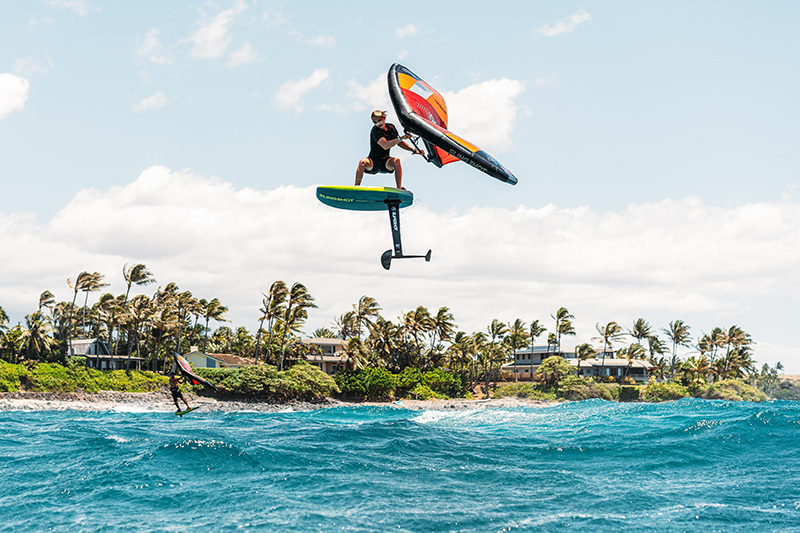
Two fresh Phantasm foil line-ups recently appeared from the Slingshot stable, so – duly diligent as we are – we dropped Wing/Wind Brand Manager Wyatt Miller a few lines to gather all the intel about the new G-Series and E-Series…
Photos: Eric Duran
Hey team. So first up, can you give us an overview of both ranges, and what their optimum disciplines and environments are?
Both E and G Series front wings are multi-sport compatible, and they work great for prone, wing, wake and windsurf, though most are too big for most kitefoiling applications.
The E Series is all about making foiling easy and having great lower speed stability and easy gradual lift. They have a nice wide chord in the middle to get you up at low speed and then taper quickly towards the tips to stay agile and stable. The E Series wings come in three sizes from 1550-2200cm2. The smallest one, the E866 is my go-to for teaching lighter weight riders learning to wing, the largest E1090 is great for the heaviest riders in the lightest wind. Our wake crew almost all use the medium sized E990 as it is well matched for the slower speed of the wave and lets you carve and play comfortably several wakes back. For learning dock starting, that mid-sized E990 at 1800cm2 is the teams go-to.
The G Series is the mid-high aspect line that is all about maximizing pump and glide performance while being stable in the roll so they don’t take a ton of concentration and ankle work to keep flying balanced and steady. They are all super dependable under foot and give you the confidence you need to carve hard. The aspect ratio is a tad lower on the smaller wings which keeps the wingspan down for great turning and acceleration while not sacrificing the low-end get up and go. The larger wings have a slightly higher aspect-ratio to maximize glide, even on small wind swell.
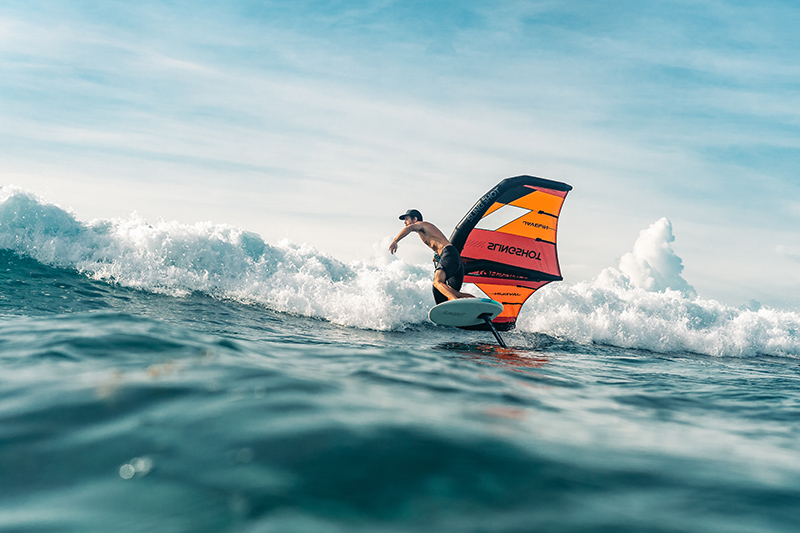
The E-Series is the newest addition to the Phantasm line-up. What spurred the demand here?
While most of us industry folks have been foiling for years, we have to admit that foiling was a bit intimidating at first. There are currently a ton of people excited to jump into foil sports with no foil (or even boardsport) experience at all. We wanted to design a wing that would lead to that “eureka” foiling moment as quickly as possible. With a wide chord in the middle for smooth, even lift at low speeds and then quickly tapered wing tips that were easy to control with downturned ends for safety, these wings not only lead to early success but they can cruise at the low speeds demanded by our wake team playing four wakes back.
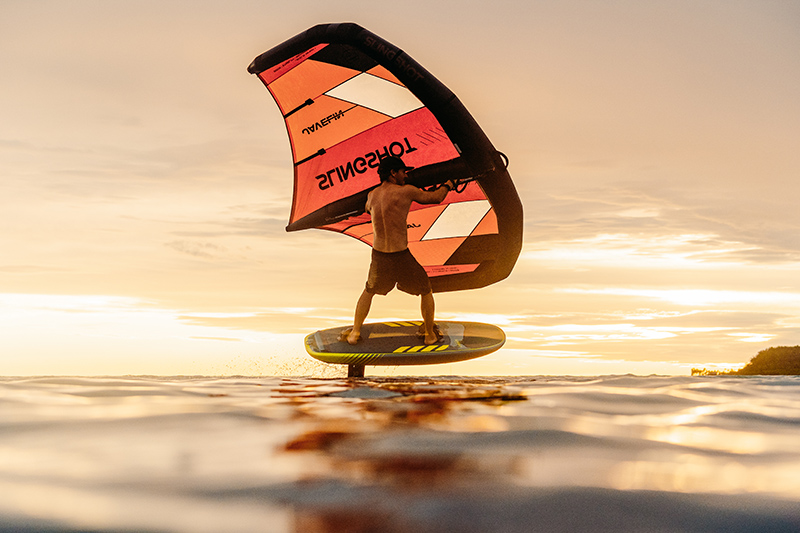
And how did you decide on your sizing for the E-Series?
Great question! This leads me to a good point that does not get discussed enough, which is that really big wings are not helpful for lightweight people who are learning. If you are under 150lbs you will have a hard time controlling a 2000+cm2 wing at the early stages. We find that lighter weight riders benefit most from a wing around 1500cm2, like the E-866. On the other hand, 220lb guys learning in light wind will definitely have an easier time on a big old wing like the 2200cm2 E1090, and seasoned vets will be able to get up and going in next to nothing. Weight matters, and with the E-Series we wanted to make sure we could deliver that “eureka” moment to every weight class.
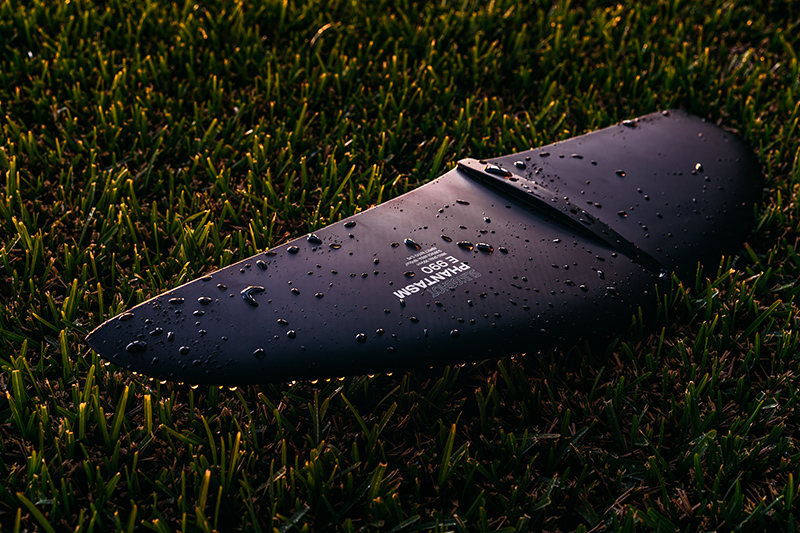
Which of your stabilizers pair best with the E-Series?
We really based all of our front wings designs to be best paired with our standard PS400 Stabilizer. We have a few more stabilizers coming down the pipe but for now the smaller PS325 is really for more advanced riders or people kite foiling where you go straight from zero to full speed as soon as you get up.
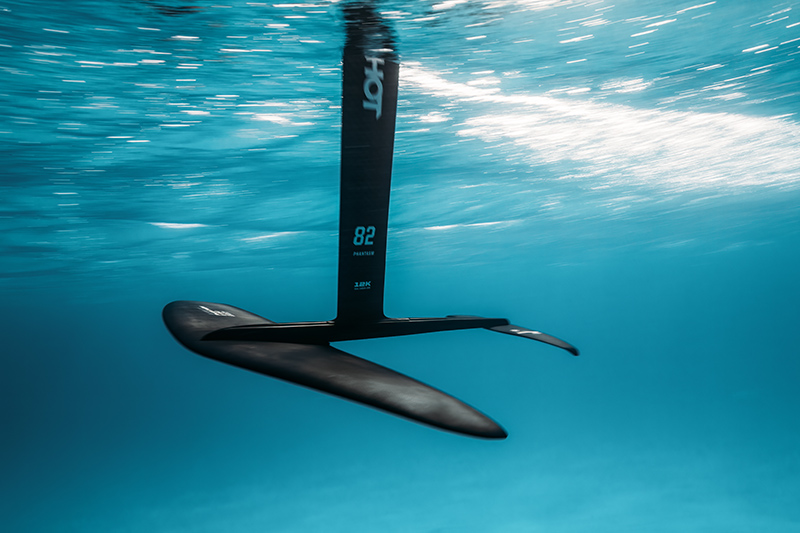
The G-Series has been out for a few months now. How has the feedback been?
We based the whole G-Series line off our PTM926 from last year. The PTM926 quickly got the reputation as “The Hero Maker” because it was so easy to use and delivered that effortless stable glide that most foilers were looking for. The PTM926 instantly made the sport of winging twice as fun for our test team, myself included. All of a sudden, I was laughing at how consistently I could pump back out to the next wave while prone foiling. The wing just did everything we wanted and was so stable and not fidgety under foot. You could use that wing in all conditions and always came back smiling, so we made a whole line of them.
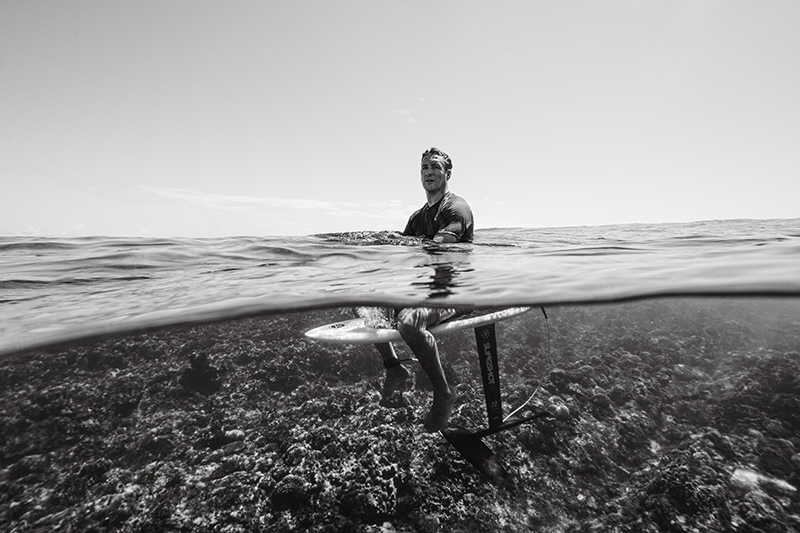
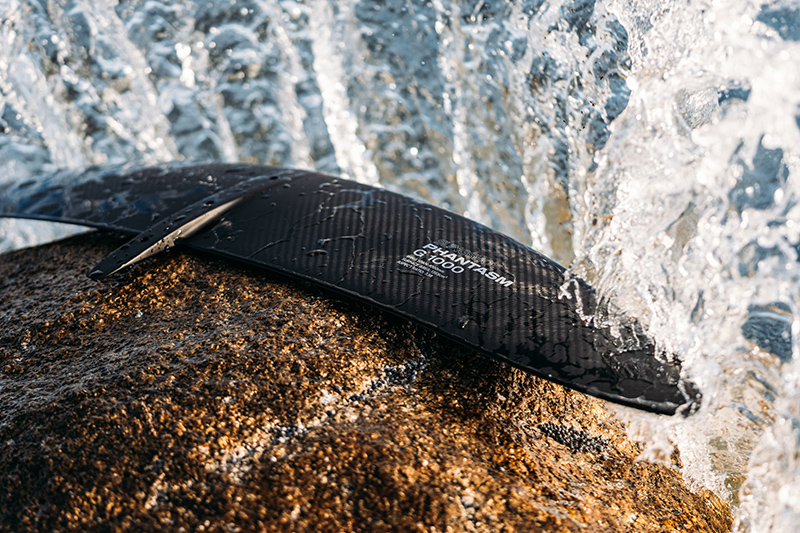
Are there a lot of iterations before you settle on the final product?
Ha! Yeah, there definitely are. We have a pretty good system at Slingshot for validating products. We have digital score cards for people to fill out that we can text to anyone who tries a product and then they just fill it out on their phone or computer. The products go to our alpha testers first, then if they test well enough we have to get a lot of beta testers to validify the product before we go to market. But getting all this testing done requires more than just a one-off prototype. Luckily, we can cut cheaper aluminum molds first that are good to produce about 20 wings max. Then when a front wing is fully checked off, we make steel molds that can pump out thousands of wings.
Who’s the lead designer for your foil range currently?
Slingshot Co-Founder Tony Logosz has been leading the charge on foil design since we started. But we have a couple of young CAD engineers who are currently giving him a run for his money. We are seeing an interesting collaboration between art and science now. All the computer fluid testing models are pretty wild to play with.
Where’s most of the testing being done for you guys at the moment, I guess you can get pretty much all conditions that you need in Hood River, right?!
Lots of testing goes down in Hood River during the summer. Our new offices are right at the waterfront. You can literally walk across the street and go for a test session and then hit the showers in the new offices afterwards. It is pretty cool. Everyone has a great view of the river. Then in the winter we test everything in La Ventana, Baja California Sur, Mexico. Our foil guru, Fred Hope, grew up here and I have a wing/windsurf resort here too. Pretty much the whole staff comes down at some point in the winter and our head tester Brandon Scheid does a lot of trips back and forth, muling gear. Then we also have Ben Wilson running the Fijian resort island of Namotu and testing all the new gear with his guests. The testing really never stops.
This is premium content that was published from our current issue #15. Subscribe to our magazine today and to stay up to date on the latest gear hitting the market.
New wing, board and brand new foil releases from Eleveight enter into their 2025 range...
READ MOREBrian Grubb's a legend both on and off the water. Lift have further recognized this, by bringing out their own Grubb signature range, tailored to his style.
READ MOREDuotone just dropped a bunch more 2025 gear, featuring new wings, foils and masts.
READ MORE